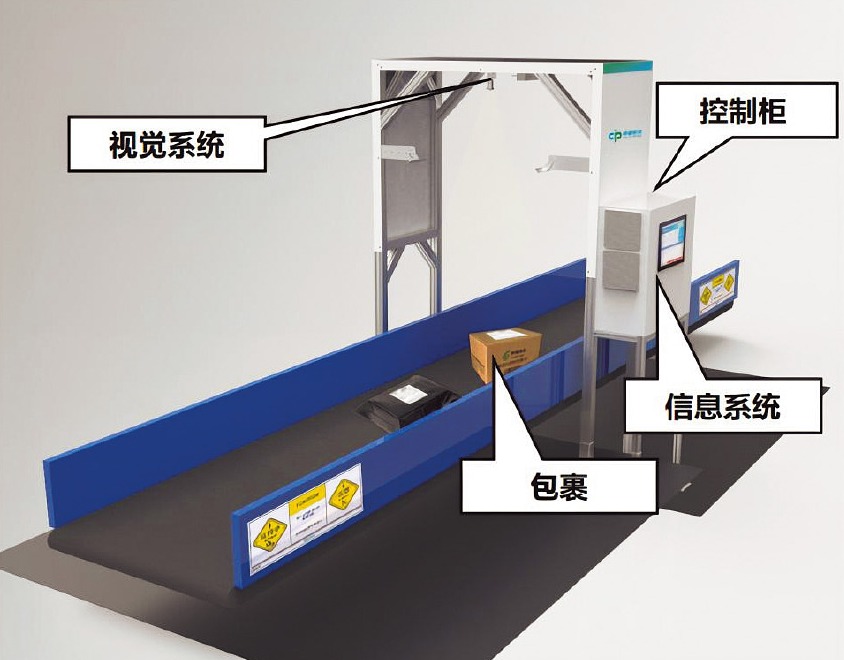Postal Business: 8610 11185
Postal Savings: 8610 95580
Logistics and EMS: 8610 11183
China Post Life: 8610 4008909999
 |
|
Diagram of the new generation of PAIS |
Since 2019, the sorting mode of "matrix + packet sorting machine" has gradually been adopted in the industry. As a result, mail processing operations have gradually evolved from the previous “CKD” (completely knocked down) mode, used in the process of loading, transportation and sorting, into the mode of consolidating mail items into dispatches. At the same time, mail processing centers have gradually developed from labor-intensive operations to labor-saving even unmanned operations. With the application of whole-process automatic parcel sorting method and automatic equipment, mail processing centers have been faced with some problems in their actual operations.
With the application of automatic equipment, the task of presorting has become increasingly important when unloading parcels, for the workers need to presort the items according to different mail processing modes. First of all, mail items that cannot be sorted or conveyed by automatic equipment, such as oversized, extra-long, overweight, round or tubular items, need to be identified preliminarily and picked out for manual sorting. Second, mail bags, large items and small items should be separated and diverted to different working areas: mail bags to the opening area, large items to the matrix, and small items to the packet sorting machine. Finally, in order to meet the requirements of automatic sorting, those that do not conform to the specifications of machine sorting, such as ultralight or ultrathin items, should also be picked out.
Such manual presorting, featuring high work intensity and low efficiency, requires a large number of workers. Moreover, neglect or mistakes may still occur. Consequently, it not only consumes time and labor, but failure to pick out the irregularities may lead to problems in subsequent processing, such as jam of the conveyor line or shutdown of equipment.
However, this situation has been changed remarkably since the mail processing center of Beijing Postal Branch introduced the AI-based Parcel-type Automatic Identification System (PAIS). This system enables automatic identification of different types of parcels, solves such painful problems as enormous consumption of manpower, repetitive and intensive work and low sorting efficiency, and hence improves the processing efficiency.
Developed by China Post Science and Technology Company Limited, PAIS consists of a vision system, a control cabinet and a parcel-type information system. The research and development of PAIS started in 2018. After years of technology accumulation and optimization, it has been upgraded to the third generation, which bears the following characteristics. First, it has realized information storage, automatic identification and intelligent operations in terms of the types of parcels. Second, it has a wide range of applications. Third, it boosts productivity and improves economic benefits significantly.
Since October 2020, this technology has been applied to 18 sets of equipment in the mail processing center of Beijing Postal Branch, handling more than 100 million parcels in total and saving over one million yuan in labor costs every year.
With the sci-tech development and application, mail processing centers have gradually caught up with the trend of the times and become a gathering place for the expanded application of new technologies. The innovation and application of the parcel-type automatic identification system has made it possible for information storage, automatic identification and intelligent operations of different types of parcels, while reducing manpower as well as work intensity and repetitiveness, and improving the efficiency of identification and processing, thereby enhancing the sci-tech level and technological strength of China Post.






